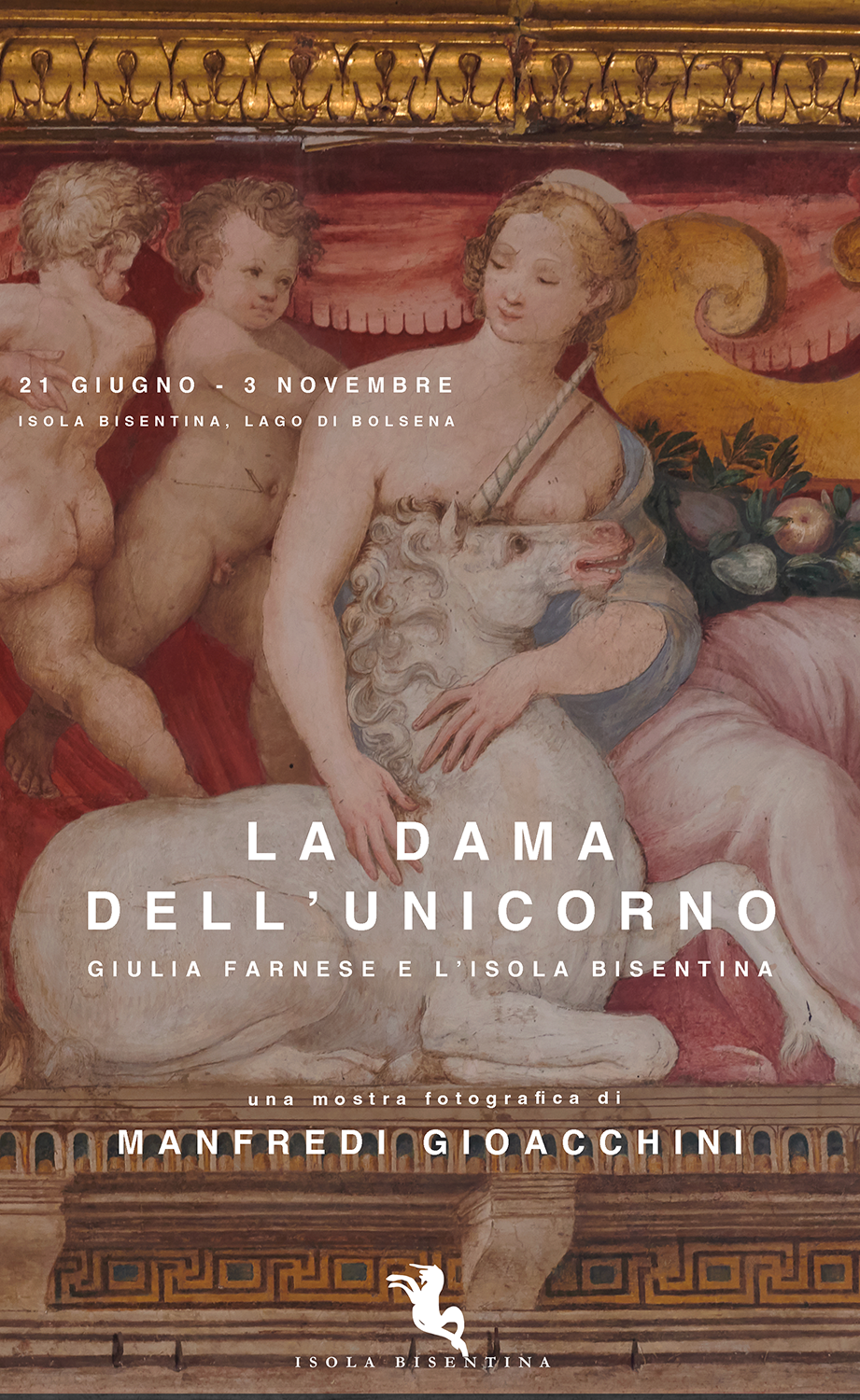
The Lady of the Unicorn, Giulia Farnese and Bisentina Island by Manfredi Gioacchini is a photographic exhibition set up in the Church of Saints James and Christopher. The Church was originally built and dedicated to Saint John the Baptist by Ranuccio Farnese the Elder, who intended it to be a mausoleum for his family on the island. It was Cardinal Alessandro Farnese the Younger who constructed the imposing monument we see today over this preexisting building: the Church of Saints James and Christopher. The construction began in 1588 based on the design of Giovanno Antonio Garzoni from Viggiù and was completed during the time of Odoardo Farnese between 1602-1603.
In agreement with the Superintendency, the church has undergone a non-invasive restoration, working to restore the original structure while allowing the marks of time to remain visible. The only existing tombstone is that of Ranuccio, which has also been restored to enable proper reading. Other family members buried in the church include the young Cardinal Ranuccio Farnese, brother of Alessandro, Pierluigi Farnese, and Gerolama Orsini. There is no certainty about Giulia Farnese. However, it is known that the noblewoman expressed a desire to be buried on the island in a detailed will that is still preserved at the State Archives in Naples. A faithful copy of the will is on display inside the church for the 2024 season.
The exhibition The Lady of the Unicorn. Giulia Farnese and Bisentina Island tells the life story of Giulia Farnese through images of the places she frequented. The photographs, taken by artist Manfredi Gioacchini, illustrate the locations from Capodimonte to Rome that were significant in the life and times of the young bride of Orsino Orsini, lover of Rodrigo Borgia, sister of the future pope, Paul III, as well as a skilled entrepreneur, benefactress, and advocate for women’s rights, and a free woman herself.
“This exhibition is the result of research that began to find Giulia, but then turned into a true unicorn hunt, as if this mythical animal was chosen by her to tell her story at a time when her beauty became too inconvenient to be celebrated by the great painters of the time. After facilitating her brother Alessandro’s rise to power through her relationship with the pope, Giulia Farnese suffered a damnatio memoriae, which is why the most beautiful woman of the Renaissance, who during her years as Sponsa Christi knew and perhaps posed for many of the painters who visited the court of Alexander VI, does not have a face today. From here comes the desire to know her and tell her story through the places most familiar to her that we are still fortunate to admire today. From Carbognano to Vasanello, from Castel Sant’Angelo to Palazzo Farnese, to Ischia di Castro and Bisentina Island itself, where Giulia wished to be buried, the unicorn – a Farnese emblem – comes to life, accompanying us on a journey to discover its lady. Sometimes it is seen depicted sleeping in the lap of a young woman, as in the fresco at the Castle of Carbognano; depending on where we are, the unicorn tells us a different version of Giulia’s life, making her a complex, intriguing, yet contemporary character. A true feminist before her time.”


